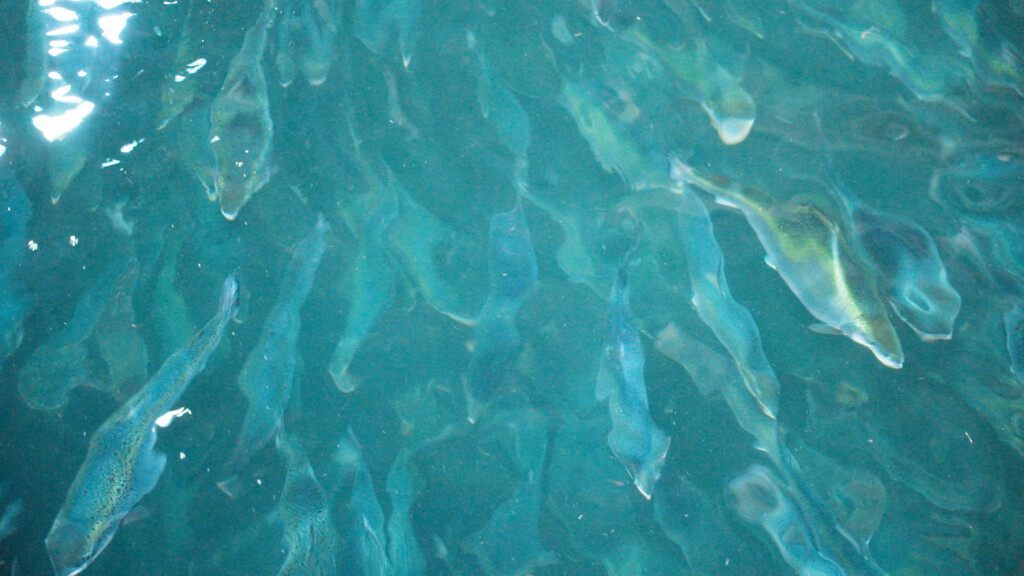FDA legal requirements – FSMA Final Rule on Requirements for Additional Traceability Records
Traceability laws and standards in the USA – what level do you need?
Several traceabilty changes have come into effect in the United States recently that have caused some confusion for suppliers of seafood as to what is needed to meet traceability regulations and also what is required for different aspects of the supply chain. This article outlines the specifications and differences between the various traceability schemes – both legal and market driven.
FSMA Final Rule on Requirements for Additional Traceability Records
The FDA (Food and Drug Administration) is the department in the US government responsible for food safety. The FDA’s new traceability rule – FSMA (Food Safety Modernization Act) Final Rule on Requirements for Additional Traceability Records for Food identified on the Food Traceability List (FTL) came into effect in November/2022 but will come under final enforcement on January 20. 2026. The ruling applies to all companies, including foreign entities, who manufacture, process, pack, or hold foods included on the Food Traceability List (FTL) within the United States. Main highlights of the new rule for seafood producers and suppliers include:
- The Food Traceability List (FTL) has been expanded to include all finfish (with the exception of catfish), crustaceans, molluscan shellfish, and bivalves, in both fresh and frozen forms.
- The Food Traceability Rule requires companies to maintain and provide to their supply chain partners specific information (key data elements or KDEs) for each physical movement or transformation in the food’s supply chain (called Critical Tracking Events or CTEs). Most specifically, the new rules require the establishment of a Traceability Lot Code from a first receiver of wild caught fish or a first harvester/packing plant of farmed fish.
- Once a traceability lot code has been assigned, it can only be changed when the food is transformed (processed into a different item or repacked) and a link to the prior lot code must be preserved by the processor. The intention of the traceability lot is to link incoming with outgoing product within a firm and from one point in the supply chain to the next.
- In the case of an audit or a recall, a company must be able to provide an electronic sortable spreadsheet containing relevant lot traceability information to the FDA within 24 hours of a request (or within some reasonable time to which the FDA has agreed) when necessary to assist the FDA during an outbreak, recall, or other threat to public health.
FSMA Purchase & Sales is fully compliant with FDA
Maritech Purchase & Sales is fully compliant with the new FDA rules and there are provisions within the software for recording and transmitting the required information and, in the case of a recall, generating a spreadsheet for the needed lot information via an Analytics traceability report.
At a high level, Maritech Purchase & Sales allows you to assign a lot no. when fish is first received and ensures the lot number is preserved and cannot be changed unless the fish is processed/transformed into a new item. The origin lot(s) that went into the production of the new item is preserved in the allocation of the raw material to the new production record or in the case of a repack, the allocation to the repack.
For first receivers of wild fish, Purchase & Sales allows detailed recording of vessel and catch details through landing notes (in Norway) or Fishing Trips (outside of Norway). For first receivers of farmed fish, when an item is stocked, if from an aquaculture harvest, both the farmer and the cage no.or pen no. can be included in the record. In addition, in Norway, a locality from Barents watch can be linked to the stocking record which gives precise location and history information related to the site, cage units, etc. Finally, an origin fish CV can be linked to the stocking record which can provide, in addition to fish feeding and medication history, etc. precise unit information for harvested fish.
The FDA ruling refers to a traceability lot code source reference. This is detailed information about the vessel and catch in the case of wild caught fish or the farm harvest location (fish unit location, etc.).
While detailed information (catch area, vessel or harvest unit, etc.) must be maintained by the first receiver of the fish – who also issues the origin lot that follows the fish – all of these details do not need to be sent to every subsequent receiver of the fish. Instead, what can be sent, along with the traceability lot code, is a traceability lot code source reference. This allows the FDA to know the business name, phone number and address of the provider of the traceability lot code. It can be in the form of an FDA food facility registration number or a web address that provides the company information.
GDST (Global Dialogue on Seafood Traceability) Standard
GDST is a non-profit foundation that was established in 2017 as a partnership between the World Wildlife Fund (WWF) and the Institute of Food Technologists (IFT). It developed a standard by which seafood supply chain partners can use a common set of data elements that need to be documented and transmitted electronically between GDST compliant trading partners and provides the technical formats for how the data elements can be transmitted. The GDST is not a legal requirement. However, if you are partnered with some grocery retailers – Wegmans, Whole Foods, or Sainsbury’s for example – then you may be required to use the GDST standard when providing shipments of fish to these grocery companies.
In addition, if you wish to market yourself as a GDST compliant provider, then you must partner with GDST. GDST Partnerships have four tiers: each with different fees and benefits. The emphasis of the GDST goes beyond the strict legal traceability standards required by the FDA ruling and has an additional focus on proving that your products are sustainably caught/grown and ethically produced with regards to environmental certifications and human welfare policies. In addition, to use the GDST standard to comply with FDA legal requirements, you have to use an extended standard from GDST as they do not explicitly capture, for example, the first receiver information needed by the FDA.
Much of this additional detail can also be recorded in Purchase & Sales. For example, you can record tag certifications such as MSC or Global GAP to accompany the fish from stocking to sale. However, the specific interface needed between the GDST retailer and Maritech Purchase & Sales is an additional external interface and not included in the base software product. In addition, some elements such as participation in a certifying body, such as Global GAP, are outside of the Maritech software system. While these details can be recorded, it is up to the seafood company to register and comply with the certification body itself.
Details of what is required by a GDST partnership can be found here:
Trace Register
Trace Register (TR5) is a private company (established in 2005) that provides traceability tracking for seafood suppliers. It is not an ERP and only gathers the traceability information from seafood producers and suppliers that is needed by retailers, usually captured in the seafood supplier’s ERP system. It provides, in addition, an interface for integrated and automated Seafood Import Monitoring Program (SIMP) filings and other regulatory bodies. Like GDST, there are some grocery retailers – Whole Foods, for example – that require seafood suppliers to use Trace Register. Trace Register is also a partner with GDST but not all retailers who require Trace Register records require GDST standards. These two organizations are similar but do not use precisely the same interface.
Details of what Trace Register offers can be found here:
https://www.traceregister.com/
Maritech Purchase & Sales does gather the information that needs to be input into Trace Register. However, an explicit integration between the two systems is not part of the base Maritech Cloud product and needs to be developed as an external integration depending upon your company’s specific requirements.



